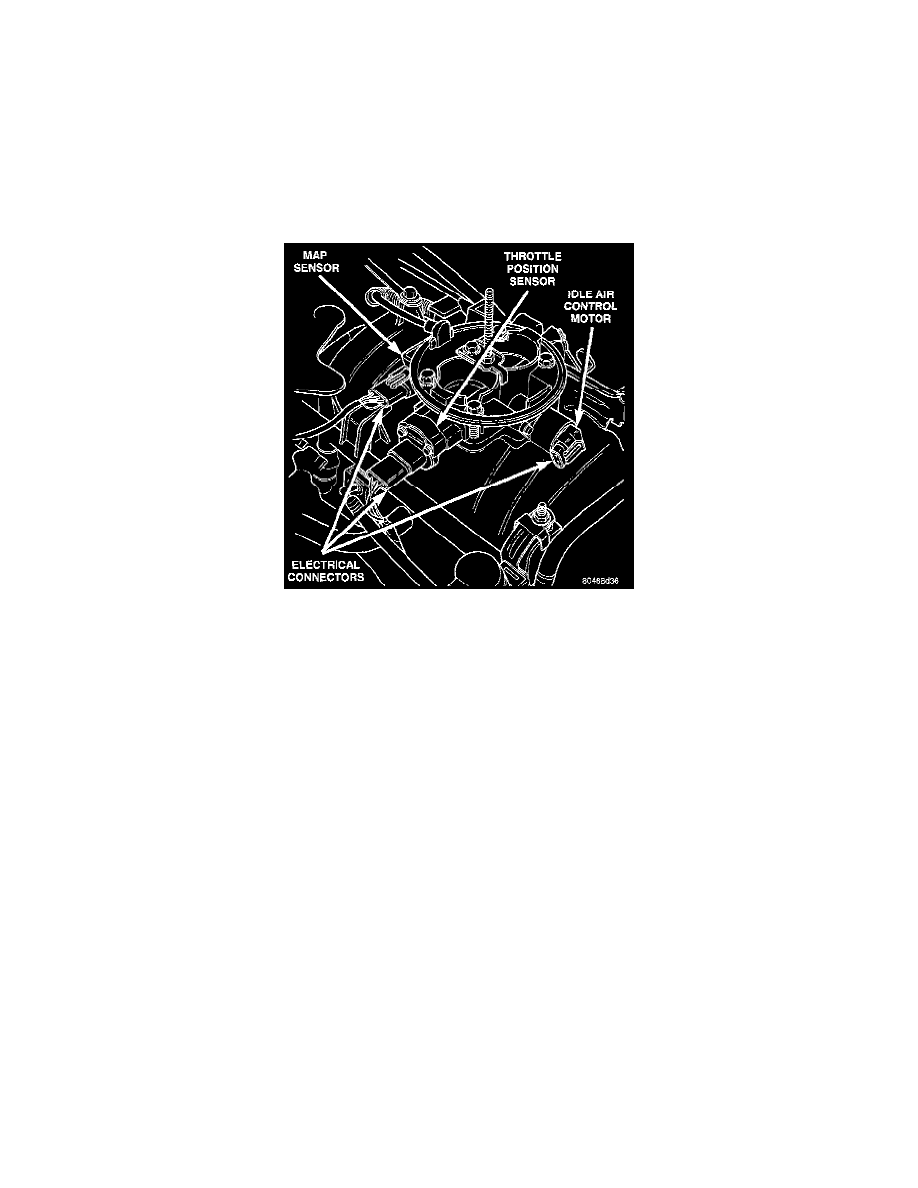Durango 4WD V8-59L VIN Z (1998) Throttle Position Sensor Technical Service Bulletins

Throttle Position Sensor: Description and Operation
DESCRIPTION
The Throttle Position Sensor (TPS) is a variable resistor that provides the powertrain control module (PCM) with an input signal (voltage) that
represents throttle blade position. The sensor is connected to the throttle blade shaft. As the position of the throttle blade changes, the resistance of
the TPS changes.
OPERATION
The PCM supplies approximately 5 volts to the TPS. The TPS output voltage (input signal to the PCM) represents the throttle blade position. The
PCM receives an input signal voltage from the TPS. This will vary in an approximate range of from 1 volt at minimum throttle opening (idle), to 4
volts at wide open throttle. Along with inputs from other sensors, the PCM uses the TPS input to determine current engine operating conditions. In
response to engine operating conditions, the PCM will adjust fuel injector pulse width and ignition timing.
Fig. 15 MAP And Throttle Position Sensor Location - Typical
LOCATION
The TPS is mounted on the throttle body.
CIRCUIT OPERATION
From the Powertrain Control Module (PCM), circuit K6 supplies 5 Volts to the Throttle Position Sensor (TPS). Circuit K6 connects to cavity
A17 of the PCM.
Circuit K22 delivers the TPS signal to the PCM. Circuit K22 connects to cavity A23 of the PCM.
The PCM provides a ground for the TPS signal (circuit K22) through circuit K4. Circuit K4 connects to cavity A4 of the PCM.
